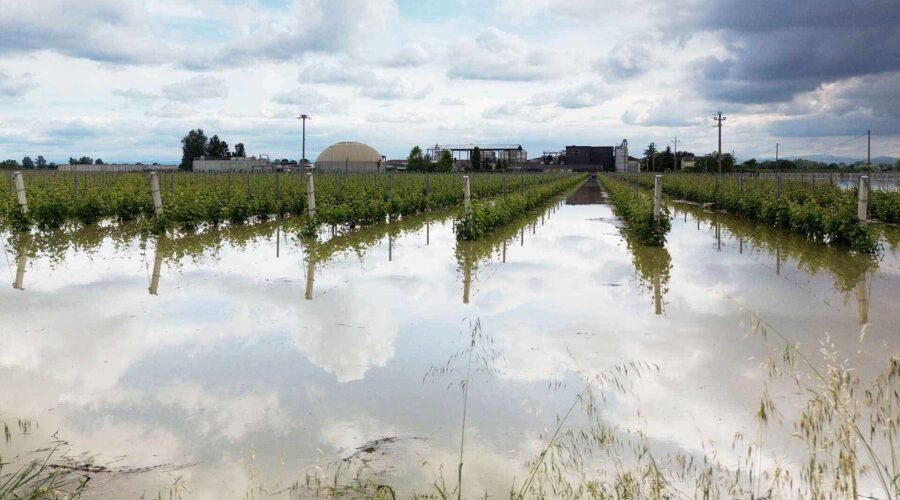Culture: After the Flood: Emilia-Romagna’s Wine Industry Struggles to Recover
In mid-May, two unprecedented storms dumped seven months’ worth of rain over Italy’s Emilia-Romagna region in under 72 hours, causing 23 rivers to overflow. The region had previously been experiencing a historic drought, exacerbating the storm’s effects. The rainfall also triggered over 2,000 mudslides, which cut off villages and destroyed homes, vineyards, orchards and anything else in their wake.
The provinces of Bologna, Cesena, Forti, Faenza, Ravenna and Rimini bore the brunt of the damage, with 15 deaths, 50,000 people displaced and an estimated €10 billion euros ($10.9 billion USD) in damage. In late June, the wine industry is still picking up the pieces.
During the storms, “my big concern was the fear of being powerless in the face of an unprecedented storm that never seemed to end and what could happen,” recalls Marco Ricci of the Romagna estate Noelia Ricci. The terror was vivid, he says. “I was realizing that around us, the water in the rivers was starting to rise and there was a risk that it would overflow with unimaginable consequences.”
Indeed, along the rivers and in the flat lands, the water rose over six feet. Chiara Condella, of the Chiara Condella estate, reports that “unfortunately some vineyards have been strongly impacted, especially in the area of Faenza where there have been major damages.”
Villages around Modigliana and Predappio, meanwhile, also experienced extensive damage. Vines and even entire vineyards were swept away. Roads disappeared, making passage to some villages and vineyards impossible via car or truck.
As a result, this is “one of the most challenging vintages in the last 30 years,” Ricci says. “And I am one of the lucky ones, because I still have vines.” Addressing problems associated with the unprecedented level of dampness is now a central focus. “We work organically and must from now until harvest remain in the vineyards to fight against disease brought by insects and fungus,” he says. “Unfortunately, it is continuing to rain, which does not help in general.”
Even in vineyards unaffected by mudslides, losses are expected to be great due to the difficulty of accessing some areas and the immense amount of necessary recovery work. Even now, the full extent of the damage is unknown—the Consorzio Vini di Romagna continues to survey its members to better understand what the future may hold for the 2023 harvest and beyond. This is a critical time as producers attempt to clean out homes, ensure worker welfare and help vines survive.

Despite the devastation, many producers are finding silver linings. “During the difficult days after the floods, we have experienced a very strong spirit of community that seemed forgotten,” explains Condella. Swarms of volunteers, especially students and young people, swooped into heavily damaged cities and villages and helped those in need.
“We were thousands of persons cleaning the streets and houses, helping other people take out water from their homes, bringing first aid to everyone who needed it, covered in mud but smiling and singing traditional songs,” Condella remembers. “It highlights the character of the people from Romagna, a strong population always overcoming the obstacles with a positive attitude.”
Across the region’s wine community, producers continue to help each other out and attempt to regain a sense of normality. This obviously remains a very difficult and trying time, especially for those who lost vineyards.
If you’re looking for ways to help Emilia-Romagna recover, Condella suggests purchasing products from the region. Or, perhaps unexpectedly, you can visit. “Now that the emergency is over, tourism is the easiest way to help,” she says. The storms may have wrought havoc, but the spirit and charm of Emilia-Romagna remain vividly bright. “Discover the beauties of our region and the great hospitality we can offer.”


